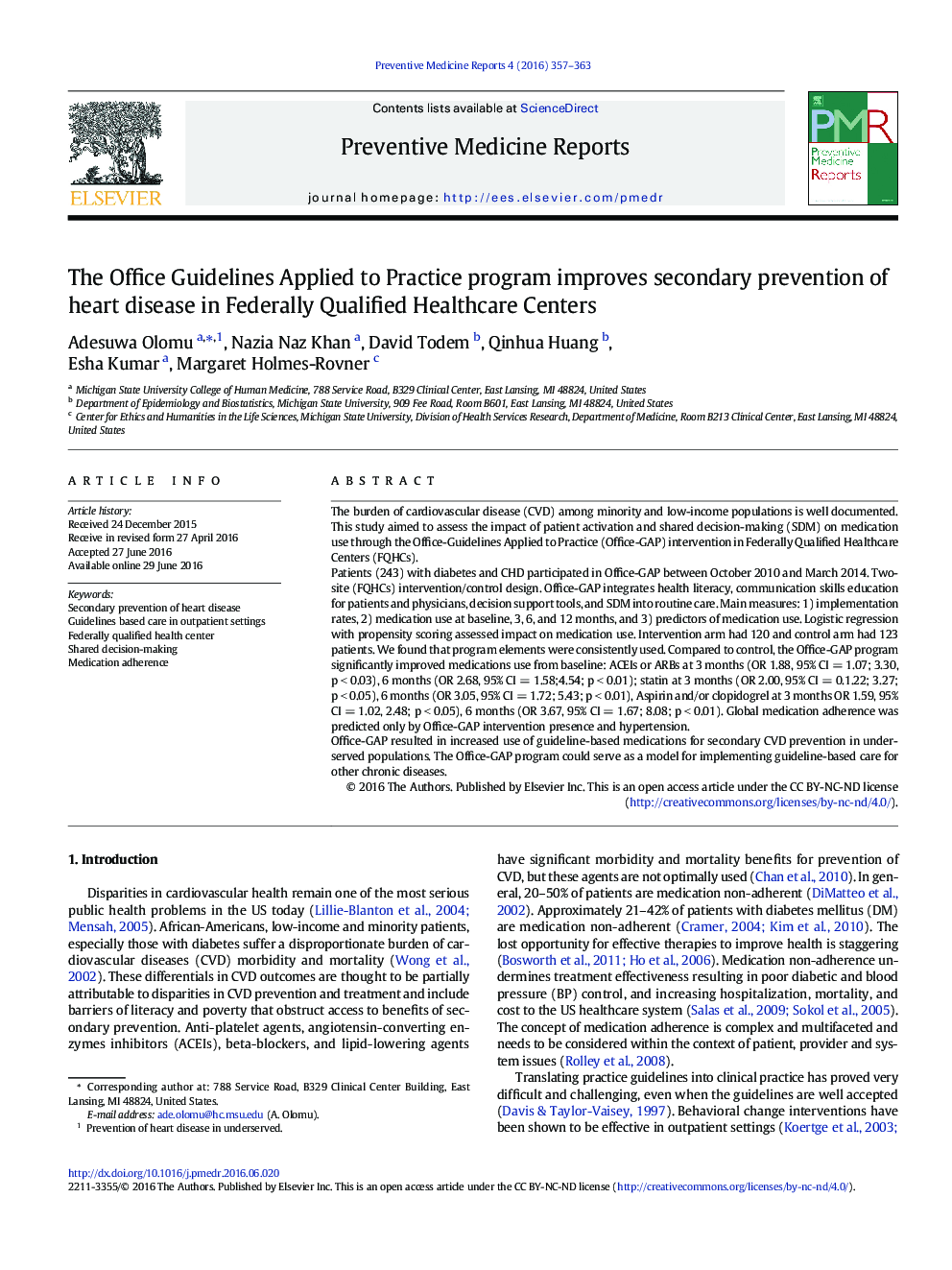| کد مقاله | کد نشریه | سال انتشار | مقاله انگلیسی | نسخه تمام متن |
|---|---|---|---|---|
| 4202282 | 1609088 | 2016 | 7 صفحه PDF | دانلود رایگان |
• Office-GAP intervention predicted global medication adherence in FQHCs.
• The Program improved use of ACEI/ARBs, statin and Aspirin in diabetics.
• Older age, female gender and black race predicted the use of statin.
• Office-GAP could serve as a model for implementing guidelines for chronic diseases.
The burden of cardiovascular disease (CVD) among minority and low-income populations is well documented. This study aimed to assess the impact of patient activation and shared decision-making (SDM) on medication use through the Office-Guidelines Applied to Practice (Office-GAP) intervention in Federally Qualified Healthcare Centers (FQHCs).Patients (243) with diabetes and CHD participated in Office-GAP between October 2010 and March 2014. Two-site (FQHCs) intervention/control design. Office-GAP integrates health literacy, communication skills education for patients and physicians, decision support tools, and SDM into routine care. Main measures: 1) implementation rates, 2) medication use at baseline, 3, 6, and 12 months, and 3) predictors of medication use. Logistic regression with propensity scoring assessed impact on medication use. Intervention arm had 120 and control arm had 123 patients. We found that program elements were consistently used. Compared to control, the Office-GAP program significantly improved medications use from baseline: ACEIs or ARBs at 3 months (OR 1.88, 95% CI = 1.07; 3.30, p < 0.03), 6 months (OR 2.68, 95% CI = 1.58;4.54; p < 0.01); statin at 3 months (OR 2.00, 95% CI = 0.1.22; 3.27; p < 0.05), 6 months (OR 3.05, 95% CI = 1.72; 5.43; p < 0.01), Aspirin and/or clopidogrel at 3 months OR 1.59, 95% CI = 1.02, 2.48; p < 0.05), 6 months (OR 3.67, 95% CI = 1.67; 8.08; p < 0.01). Global medication adherence was predicted only by Office-GAP intervention presence and hypertension.Office-GAP resulted in increased use of guideline-based medications for secondary CVD prevention in underserved populations. The Office-GAP program could serve as a model for implementing guideline-based care for other chronic diseases.
Journal: Preventive Medicine Reports - Volume 4, December 2016, Pages 357–363
